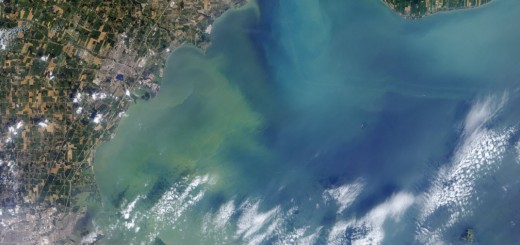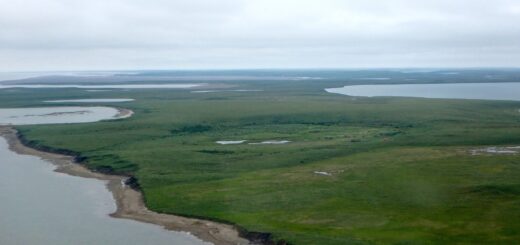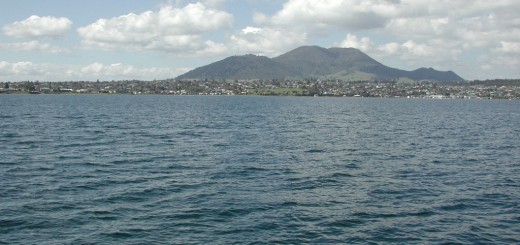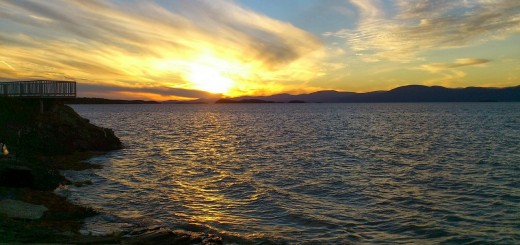Research Summary: Effect Of Deforestation On Global Wetland Hydrology
11School of Geography Planning and Environmental Management, The University of Queensland, Brisbane, Australia
Humans have been clearing forest for thousands of years to prepare the landscape for settlement and agriculture. There has been a major focus on the impact of catchment deforestation on the quality of water flowing into wetlands (e.g. nutrient and sediment loads) [1, 2] and palaeoecological studies of deforestation in wetland catchments usually use methods specifically designed to detect these impacts. We know from modern hydrological studies that deforestation can also increase the quantity of water available to wetlands [3, 4] because trees transpire more water than grassland or cropland. Apart from the ongoing debate in Europe about the effect of prehistoric forest clearance on mire formation, [5] there has been no systematic study of the effect of past deforestation on global wetland hydrology.

Figure 1. The potential increase in catchment water yield after deforestation (QY) is calculated as a fraction of the catchment precipitation (P) and is depicted as QY/P. Values for QY/P depend on the ratio of EP (evapotranspiration) to P in the wetland catchment. (Credit: Woodward, et al.)
Methods
We used a three-pronged approach (modelling, meta-analysis, and case-studies) to explore this issue. We used water balance modelling based on the Budyko hypothesis [6] to estimate the increase in water available to wetlands (catchment water yield) after deforestation. We used this method to explore variation in post-clearance increases in catchment water yield across different climate regimes. We then used the information derived from the modelling to explore the global pattern and magnitude of post-clearance increases in catchment water yield using GIS and the Global Lake and Wetland Database (GLWD) [7]. We then performed a meta-analysis of published studies of wetland response to deforestation to expand on the modelling approach. This included modern studies based on direct observations and palaeoecological studies based on proxies for forest cover (e.g. pollen) and the wetland environment (e.g. diatoms). Finally, we demonstrated the possible consequences of deforestation for wetland hydrology and ecology using two case studies from Australasia. We used fossil pollen to determine the timing of deforestation and fossils from aquatic plants and animals to reconstruct changes in the wetland environment.

Figure 2. Potential increase in catchment water yield in deforested areas. This is derived from a possible area of forest cover without anthropogenic deforestation and the results of the water balance analysis depicted in Figure 1. The location of the case studies (LE: Lake Emma; LLL: Little Llangothlin Lagoon) are also shown. (Credit: Woodward, et al.)
Results
The water balance modelling indicated that post-clearance increases in catchment water yield were a function of the hydroclimate, or the ratio of evapotranspiration (EP) to precipitation (P) (EP/P) (Figure 1). Deforestation will result in the largest increase in catchment water yield where EP = P, and the potential increase in catchment water yield decreased in wetter (EP/P < 1) or drier (EP/P > 1) climates. Increased catchment water yield following deforestation can be equivalent to a 15% increase in rainfall (Figure 1). Between 9 and 12% of wetlands in the GLWD (including 20-40% of Ramsar wetlands) are located in deforested areas and the post-clearance increase in catchment water yield could be up to 600 mm (Figure 2). The meta-analysis produced data from deforestation studies on 317 wetlands. This data is available online via the Dryad Digital Repository at http://dx.doi.org/10.5061/dryad.m62gj. The meta-analysis supports the conclusions derived from the modelling and also provides a snapshot of our state of knowledge on the effect of deforestation on wetlands. The meta-analysis revealed potential biases in palaeoecological studies on wetland catchment deforestation. Over a third of the studies in the meta-analysis did not use suitable methods to detect changes in wetland hydrology. Even studies that used suitable proxies to detect changes in wetland hydrology (e.g. diatoms) may miss this effect in deeper lakes if they were not specifically looking for it. The two case studies from Australasia illustrate the ecological consequences of increased catchment water yield following deforestation. Maori deforestation in the catchment of the New Zealand wetland c. 1250 AD (Lake Emma, Figure 3) increased the water depth to levels not experienced in this wetland for thousands of years. Forest clearance by European settlers in the Australian wetland after 1840 AD (Little Llangothlin Lagoon, Figure 4) converted an ephemeral swamp to a semi-permanent shallow lake.

Figure 3. A. Lake Emma, New Zealand (Credit: James Shulmeister); Maori deforestation c. 1250 AD increased the depth in this lake to levels not experienced for thousands of years. Fossil pollen and radiocarbon dating was used to determine the timing of deforestation and non-biting midge fossils (chironomids) were used to reconstruct water depth. B. A fossil head capsule from a chironomid larva (Naonella kimihia) (Credit: Craig Woodward)
Conclusions
We demonstrated that deforestation can cause major changes in wetland water quantity as well as water quality. Deforestation can increase water depth and persistence in wetlands and even create new wetlands where none previously existed. There appears to have been a disconnection between the hydrology community and the palaeoecology community. The former has recognised the effects of deforestation on wetland hydrology for decades, but the latter usually recognises changes in wetland hydrology as an accidental bi-product of their study. It seems that the overall perception that erosion and increased nutrient input are the most important effects of deforestation on wetlands has affected the way we study the effect of prehistoric deforestation on global wetlands. It is critical that future studies are designed to specifically test for a hydrological response to deforestation. Future management of wetlands should also consider the consequences of reforestation of wetland catchments on wetland hydrology.

Figure 4. Little Llangothlin Lagoon, Australia (Credit: Craig Woodward). Forest clearance by Europeans after 1840 AD converted this wetland from an ephemeral swamp to a semi-permanent, shallow lake. Fossil pollen and lead-210 dating was used to determine the timing of deforestation and fossils from aquatic plants and animals (e.g. charophytes and chironomids) were used to infer changes in water level and persistence.
Full study published in Science, 2014 v. 346, 844-847.
Selected References
- M. Søndergaard, E. Jeppesen, Anthropogenic impacts on lake and stream ecosystems, and approaches to restoration. J. Appl. Ecol. 44, 1089–1094 (2007).
- M. M. Brinson, A. I. Malvárez, Temperate freshwater wetlands: Types, status, and threats. Environ. Conserv. 29, 115–133 (2002).
- J. M. Bosch, J. D. Hewlett, A review of catchment experiments to determine the effect of vegetation changes on water yield and evapotranspiration. J. Hydrol. (Amst.) 55, 3–23 (1982).
- A. E. Brown, L. Zhang, T. A. McMahon, A. W. Western, R. A. Vertessy, A review of paired catchment studies for determining changes in water yield resulting from alterations in vegetation. J. Hydrol. (Amst.) 310, 28–61 (2005).
- H. Cubizolle, F. Fassion, J. Argant, C. Latour-Argant, P. Galet, C. Oberlin, Mire initiation, climatic change and agricultural expansion over the course of the Late-Holocene in the Massif Central mountain range (France): Causal links and implications for mire conservation. Quat. Int. 251, 77–96 (2012).
- L. Zhang, W. R. Dawes, G. R. Walker, Response of mean annual evapotranspiration to vegetation changes at catchment scale. Water Resour. Res. 37, 701–708 (2001).
- B. Lehner, P. Döll, Development and validation of a global database of lakes, reservoirs and wetlands. J. Hydrol. (Amst.) 296, 1–22 (2004).
Featured Image: Coastal wetlands at Parker River National Wildlife Refuge in Massachusetts. (Credit: Kelly Fike, U.S. Fish and Wildlife Service)














[…] Land use is an important consideration in terms of protecting the ecosystem and the biodiversity there. In particular, forested watersheds and water bodies are defined by the health of the surrounding woods. Debris from the trees falls into the water, becoming food for the fish and smaller organisms in the system—enriching the water with vital nutrients. […]